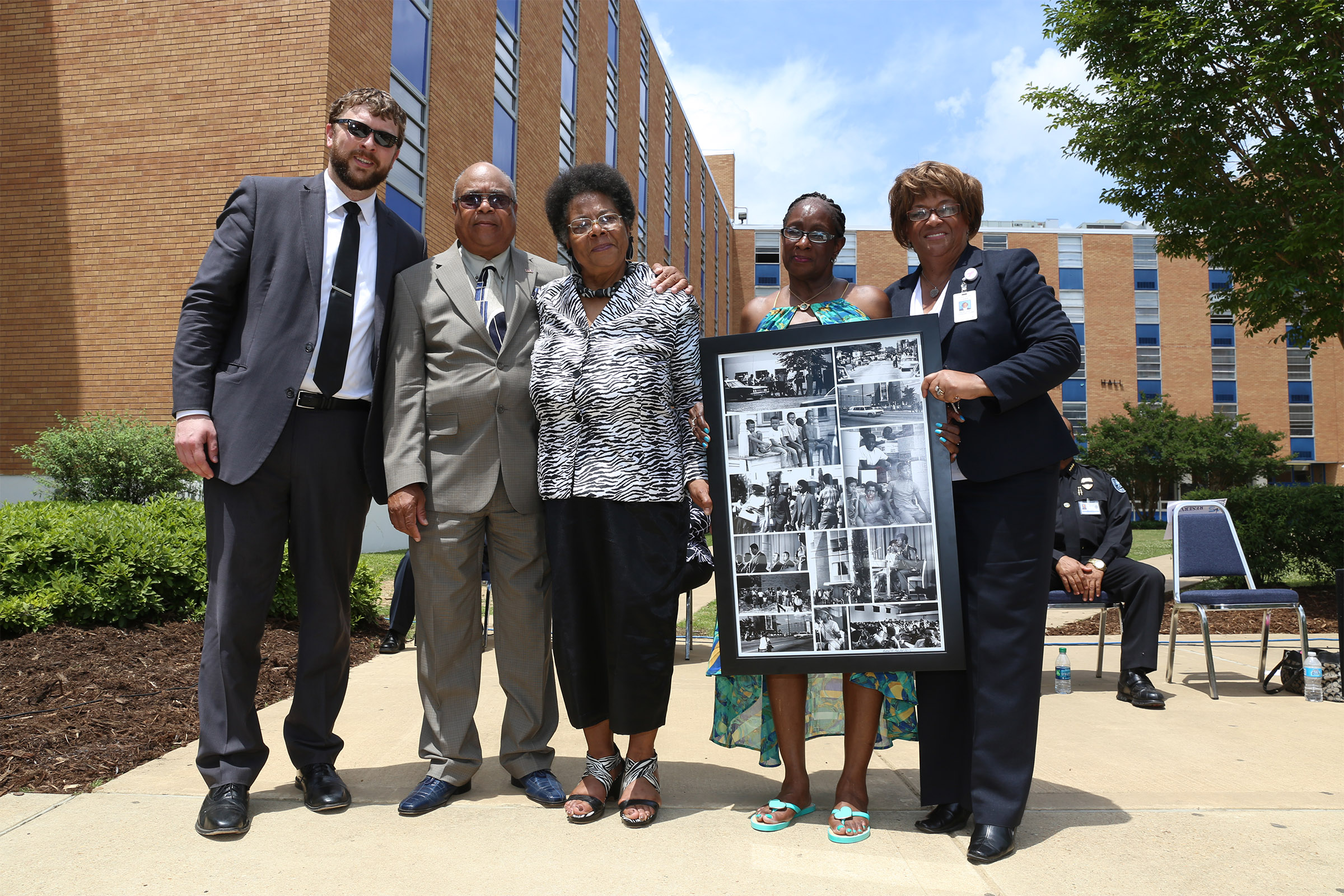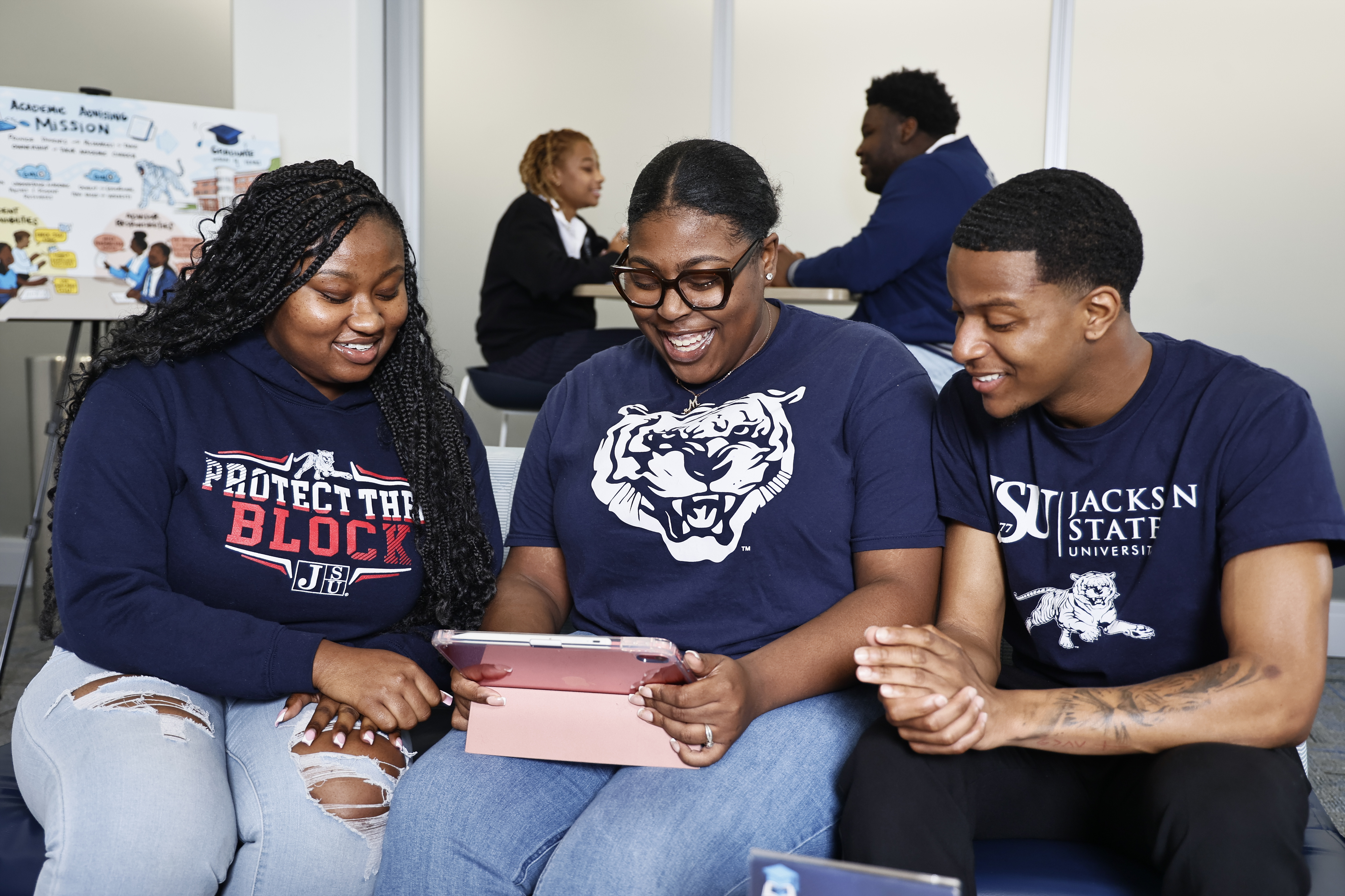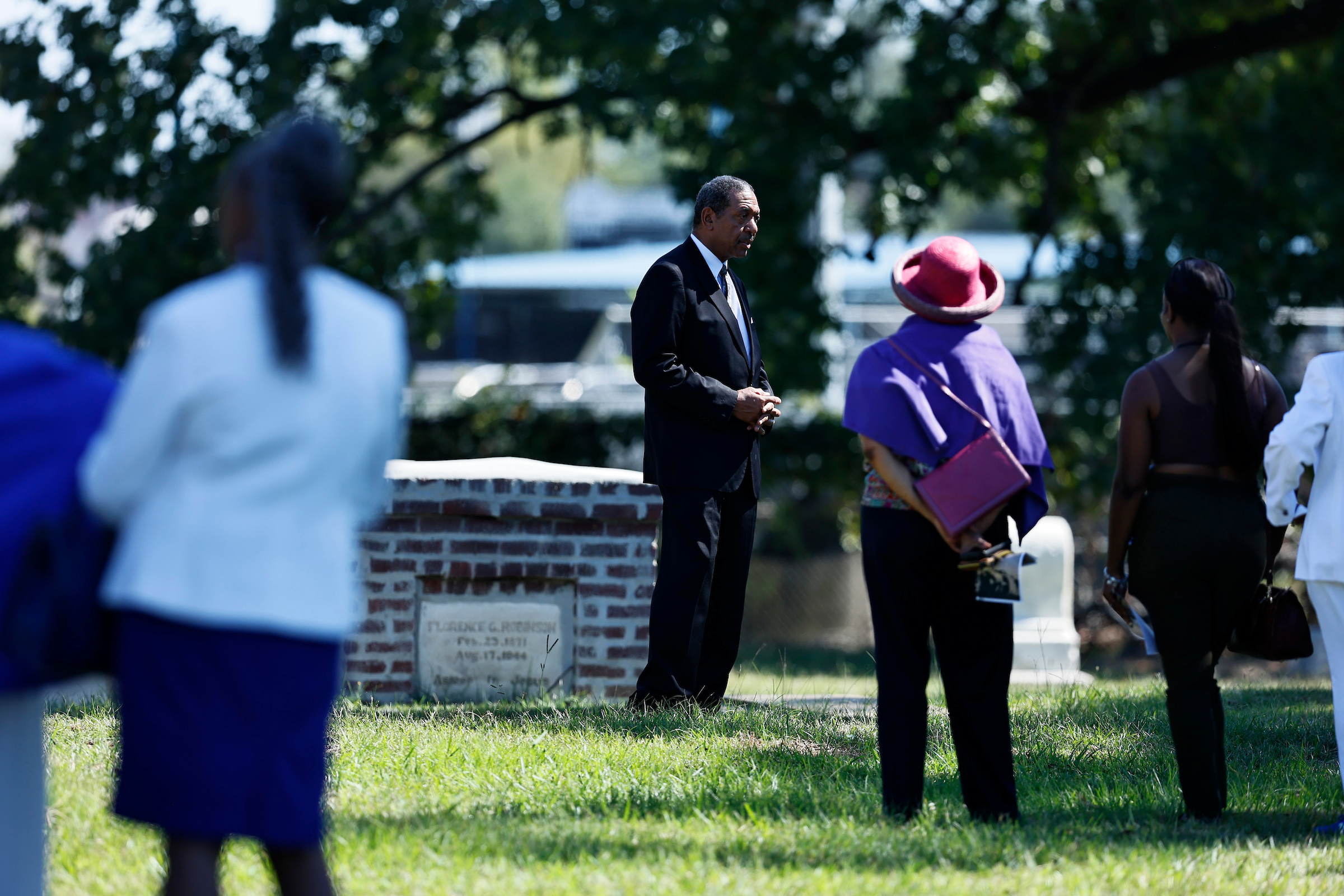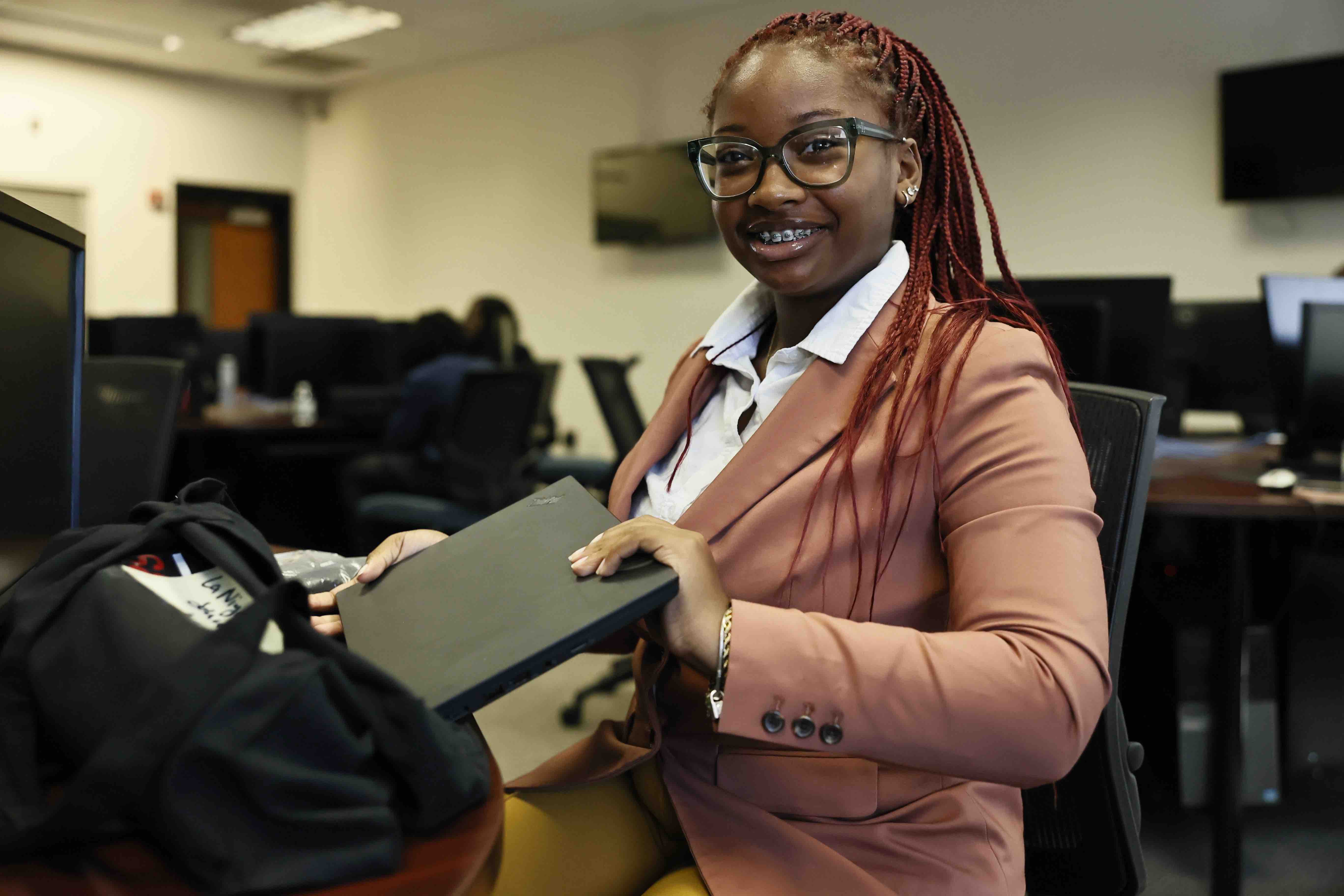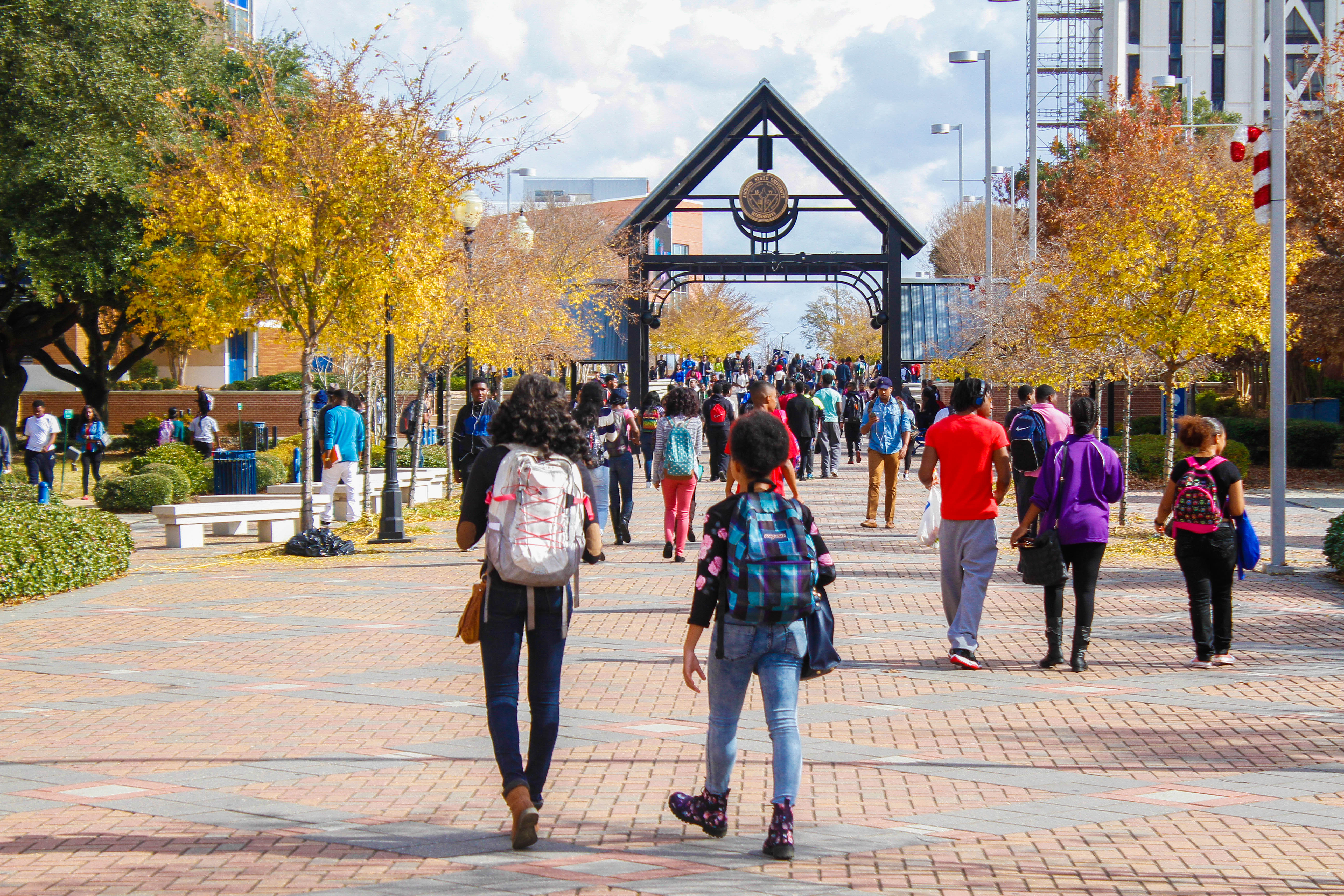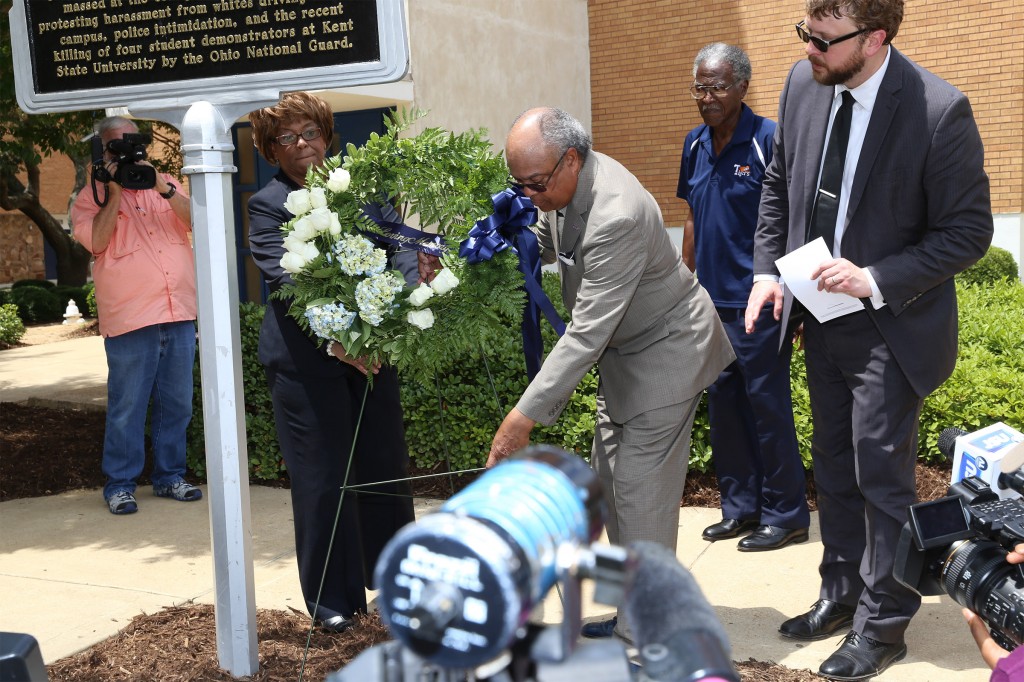
Survivors and witnesses of one of the most horrific events in Mississippi history gathered Friday for reflections and a wreath-laying ceremony outside Jackson State University’s Alexander Hall, the same spot where a peaceful protest 45 years ago left two people slain. As well, 12 were injured by gunfire and many others trampled and maimed by flying glass when bullets, more than 430 rounds, shot by lawmen pelted the dorm and ripped across the campus and vicinity.
Reflecting on recent tragedies of unarmed African-American males killed by lawmen, moderator Dr. Robert Luckett, director of the Margaret Walker Alexander Research Center at JSU, said, “The events of this year – from Ferguson to Charleston and New York – are not just isolated moments in the present but have a long history.” He said this day – which included guests such as politicians, lawmen and a jurist – is important to behold and commemorate.
A campus war zone
By all accounts, the scene on May 15, 1970, resembled a war zone rather than an institution of higher learning. That’s when hundreds of bullets pierced the woman’s dormitory, forcing hoards of panicked students scrambling for their lives. Once delayed assistance finally arrived, emergency rooms were inundated with those suffering physical and mental pain.
The two young people killed were Phillip Lafayette Gibbs, 21, a junior pre-law major and married father of an 18-month-old son and another on the way; and James Earl Green, 17, a senior at Jim Hill High School, mortally wounded while observing the commotion. Shots were fired by Jackson Police and the Mississippi Highway Patrol.
Now, decades later, the face of JPD has changed. Lee Vance, the current police chief, succeeded several other blacks in the top role. He was 12 years old at the time of the campus uprising. “I felt afraid and didn’t really understand what was going on.” Speaking to those who witnessed or survived the tragedy, Vance said, “I’m able to follow the trail you paved for me now to become the chief of the Jackson Police Department. I understand what our responsibilities are.” He urged the crowd not to judge JPD by events currently happening in other parts of the country. He said that as an officer he understands that “the only true path to success is working with the community, not against it.”
Survivor recounts tragedy
Treated for shock in 1970, then-student Eddie Jean McDonald Carr, said, “This is our legacy; this is our history. We must never forget where we came from.” Although not the reigning queen at the time of shootings, Carr was elected Miss Jackson State College weeks earlier. Today, as the first African-American to serve as Hinds County Chancery Clerk, she said, “I could have been killed. I thank God I’m here today.” Slain victim Gibbs was the brother of Carr’s roommate.
The family of Green attended the memorial for their deceased relative. Gloria Green-McCray, a sister of the victim, said, “This day is even more special because the tragedy occurred 45 years ago on this exact day. It brings back a lot of memories because my brother was killed two weeks before graduation and never got a chance to vote.” Green-McCray said the JSU observance is bittersweet because her mother died in December, having gone to her grave still grieving over the loss of her son.
Protesting Vietnam War or racial tensions?
In addition, alum and witness James “Lap” Baker shared moving remarks about that fateful day. He continues to dispute reported aspects of the protest, saying the situation in Jackson was about racism, not about the Vietnam War as some media claim. Baker was referring to Kent State University’s deadly shootings days before the JSU tragedy. In fact, the Ohio tragedy was sparked by anti-war fervor that left four students dead and nine wounded.
Also, reflections were offered by JSU President Emeritus John A. Peoples, who was president of Jackson State College during the tumultuous period. “This Gibbs-Green plaza was developed because students and I went down to the City Council and demanded that this site be made part of Jackson State.” After his remarks, Peoples, along with Baker and Carr, laid a wreath in front of Alexander Hall at the Freedom Trail marker that explains the history of the 1970 tragedy.
After the outdoor event, guests converged onto the Student Center for a symposium inside the facility’s theater for more reflections.



